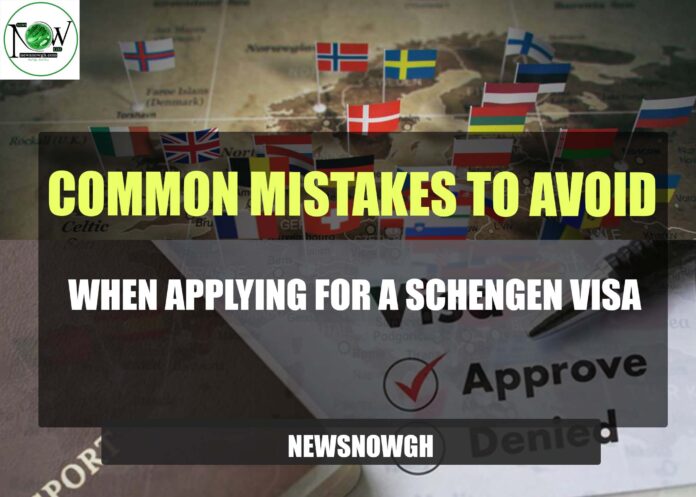Common Mistakes to Avoid When Applying for a Schengen Visa
Applying for a Schengen visa can be difficult, and many people have their applications denied because of frequent errors. Knowing these common mistakes and the latest rejection rates might help you better prepare and raise your chances of obtaining a visa. These mistakes can range from assembling the wrong paperwork to applying at the wrong place.
Do you have aspirations of seeing Europe’s captivating scenery and energetic cities? Acquiring a Schengen visa is the initial measure towards fulfilling this ambition.
However applying for a Schengen visa can be difficult and confusing, with many steps that could result in unanticipated denials. To improve your chances of having your application accepted, let’s examine typical errors made by travelers and how to avoid them.
Rejection of a Schengen Visa: A Closer Look
You can travel freely within 29 European nations if you have a Schengen visa. If the strict conditions are not carefully fulfilled, they could result in the denial of a visa.
Indian tourists encountered severe difficulties in 2023 obtaining Schengen permits; of 966,687 applications submitted, 151,752 were denied. Due to the high rejection rate, a significant financial loss of €12.1 million (Rs 109 crore) was incurred, which highlights larger difficulties experienced by international travelers.
Who Was Rejected the Most Often?
In 2023, 1.6 million visa applications were denied in all Schengen member nations. This corresponds to application fees received of €130 million (around Rs 1,172 crore). The following nationalities were primarily impacted by these rejections:
- Turks: Approved applications cost €13.5 million (about Rs 117.8 crore).
- Algerians: Approved applications cost €13.3 million (about Rs 116.1 crore).
- Indians: The cost of rejected applications was €12.1 million (around Rs 105.6 crore).
- Moroccans: Rs 95.1 crore (€10.9 million) was spent on applications that were turned down.
- Chinese: Despite having a comparatively high acceptance rate, €4.8 million (about Rs 41.9 crore) was spent on applications that were denied.
Typical Mistakes and How to Prevent Them
It can be a rigorous process to apply for a Schengen visa, and even minor errors might result in denial. Gaining knowledge about typical mistakes and how to avoid them will greatly improve your chances of success. Here are some important things to think about:
1. Gathering Inadequate or Erroneous Records
A common mistake made by tourists is to compile their documentation using antiquated lists or word of mouth. There may be differences in the requirements between Schengen Area countries, thus it is important to consult the official checklist that the embassy or consulate where you are applying provides.
Make sure you have all the required paperwork, such as a current passport, evidence of lodging, a travel schedule, and sufficient funds.
2. Neglecting the Need for a Passport
For your passport to be approved for a Schengen visa application, it must fulfill certain requirements. It must have been granted within the last ten years and be valid for at least three months after your intended departure from the Schengen Area. It should also include two or more blank pages for visa stamps. If these conditions aren’t met, you risk being rejected right away.
3. Information in Different Documents Is Inconsistent
Filling up your visa application form requires consistency. Everything should be exactly in line with the data in your supporting documents. Name, date, or other important detail discrepancies can arouse suspicions and result in the denial of your application. Before submitting, make sure all the information is correct by checking it again.
4. Ignoring Your Travel Insurance
Having travel insurance is a must for obtaining a Schengen visa. At least €30,000 in medical costs, including emergency hospital care and repatriation, must be covered by the insurance coverage. Make sure your insurance covers all the countries you intend to visit and is valid for the duration of your stay in the Schengen Area.
5. Improper Timing of Your Application
When applying for a Schengen visa, timing is everything. Your application may be rejected if it is submitted either too soon or too late. Three months to fifteen days before your planned departure date is the best time to apply. If you apply outside of this timeframe, there may be problems with processing or not enough time for approval.
6. Selecting the Incorrect Consulate or Embassy
Applying at the appropriate embassy, consulate, or visa application center is crucial. Usually, this depends on whether the country is your primary goal or where you plan to spend the most time. Applying in the incorrect place may cause needless delays or rejection. Check that the location of your application is correct given your travel schedule.
7. Not Bringing Enough Cash
It is common for embassies and consulates to demand cash payment of the visa application fee. Your application may not be processed if you arrive without the appropriate amount or payment method. To avoid any last-minute problems, be sure to check the payment requirements beforehand and arrive prepared.
Conclusion
Applying for a Schengen visa necessitates paying close attention to specifics and following guidelines. It is possible to increase the likelihood that your application will be accepted by avoiding these typical errors.
Make sure all of your documents are in order, follow the formal instructions sent by the embassy or consulate, and double-check for conformity and consistency. The secret to a seamless and fruitful visa application procedure is awareness and preparation.
You can increase your chances of getting your Schengen visa and avoid frequent traps by being aware of the data and causes behind high rejection rates.


